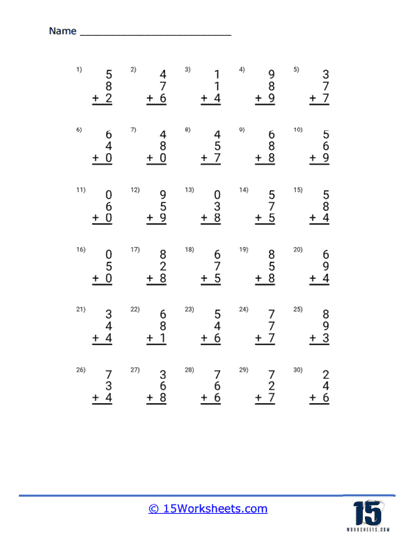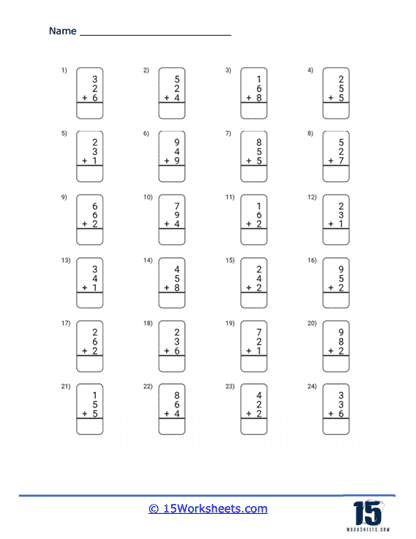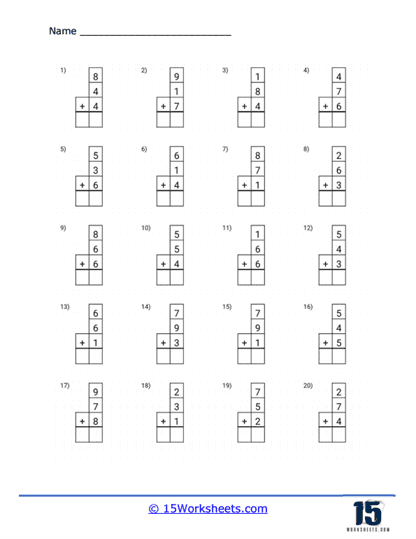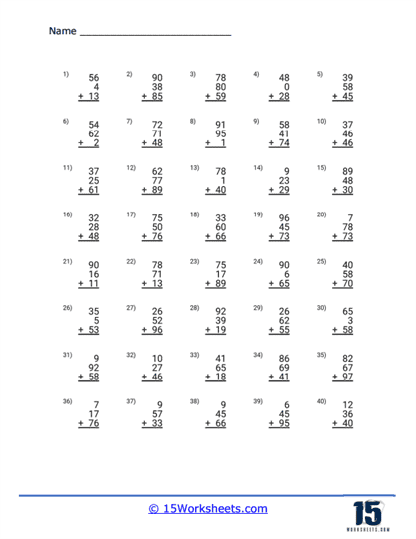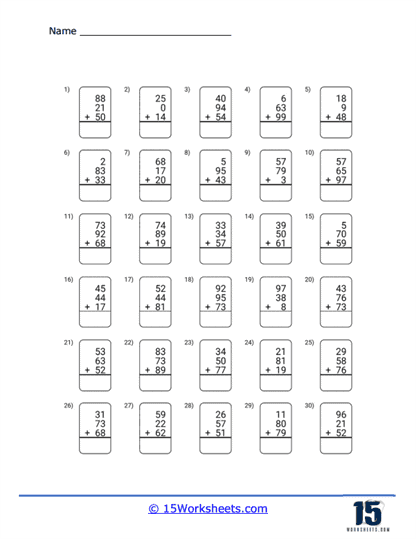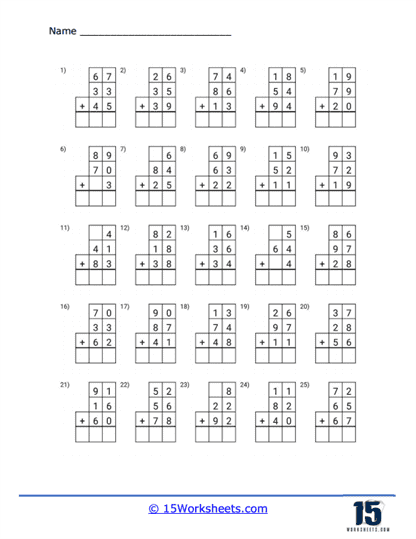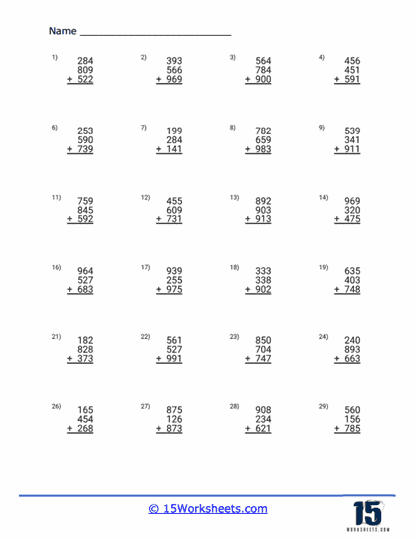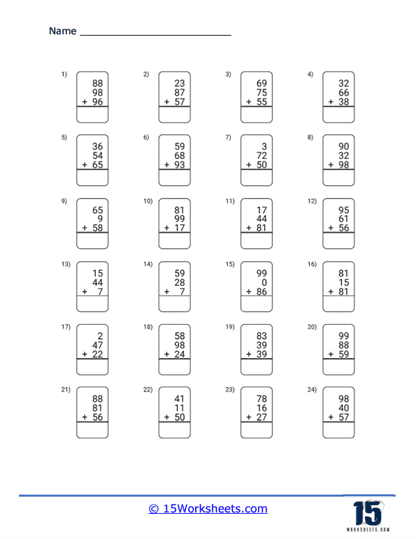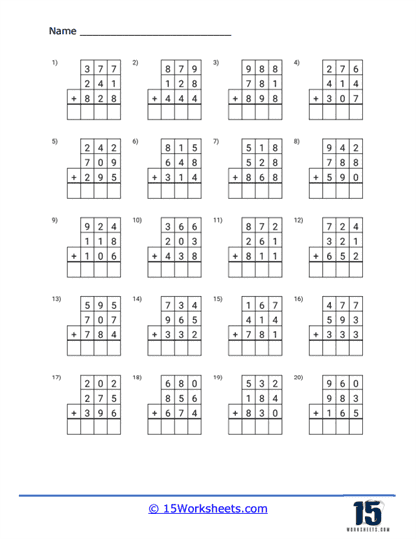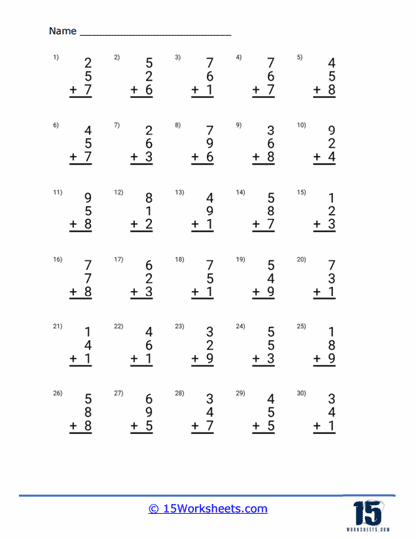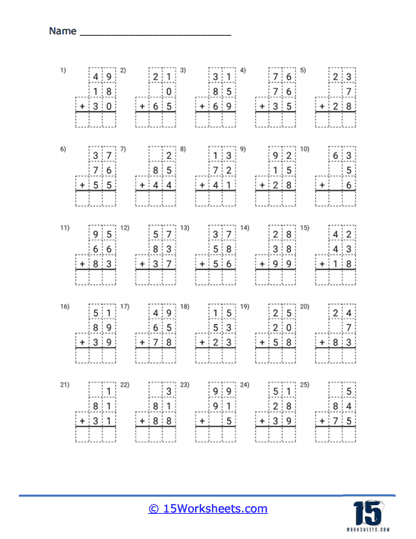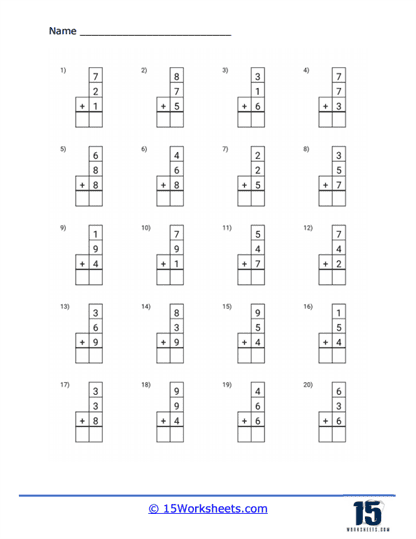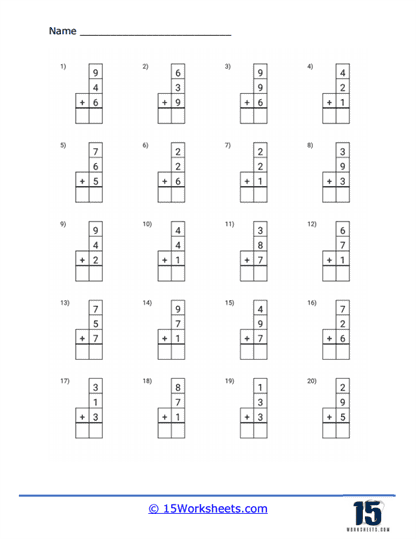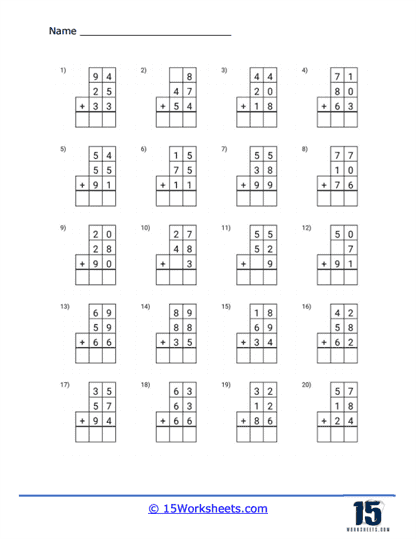Adding 3 Numbers Worksheets
All About These 15 Worksheets
This series of worksheets on adding 3 numbers is an excellent resource for students who are learning to add multiple numbers together. These worksheets typically feature a variety of problems, ranging from simple to more complex, that require students to add three numbers together to find the sum.
The worksheets may include different types of addition problems, such as adding three one-digit numbers, three two-digit numbers, or three three-digit numbers together. Some also include helpful visuals, such as number lines or grids, to aid students in understanding the concept of adding three numbers together.
One of the key benefits of using a series of worksheets on adding 3 numbers is that it provides students with ample practice and reinforcement of the addition concept. As students work through the problems, they develop their mental math skills, become more confident in their abilities, and are better equipped to apply what they’ve learned to other areas of math.
Overall, a series of worksheets on adding 3 numbers is an effective tool for students who are learning to add multiple numbers together. By providing a variety of problems and visual aids, these worksheets can help students develop their addition skills and build a strong foundation for future mathematical concepts.
How To Add 3 Numbers Together
There are a number of different ways for you to approach solving problems that have more than a pair of values. Here are a few methods to consider:
- 1. Sequential addition – Simply add the first two numbers together, and then add the result to the third number.
- Example: 4 + 5 + 3 First, add 4 + 5 = 9 Next, add 9 + 3 = 12
- 2. Grouping – Group numbers in a way that makes it easier to add them. This is especially helpful when you can create sums that are multiples of 10 or when working with larger numbers.
- Example: 18 + 2 + 12 First, group 18 + 2 = 20 Next, add 20 + 12 = 32
- 3. Associative Property – The associative property states that the grouping of numbers in addition does not affect the sum. You can use this property to rearrange the numbers to make the addition process simpler.
- Example: 6 + 4 + 7 First, rearrange to 4 + 6 + 7 Next, group 4 + 6 = 10 Finally, add 10 + 7 = 17
- 4. Place value method – Break down the numbers into their place values (ones, tens, hundreds, etc.) and add them separately. Then, combine the sums to get the final result.
- Example: 23 + 45 + 12 First, add the ones place: 3 + 5 + 2 = 10 Next, add the tens place: 20 + 40 + 10 = 70 Finally, combine the sums: 70 + 10 = 80
Choose the method that works best for you or the specific problem you’re trying to solve. With practice, you’ll develop a sense of which strategy to apply in different situations.

